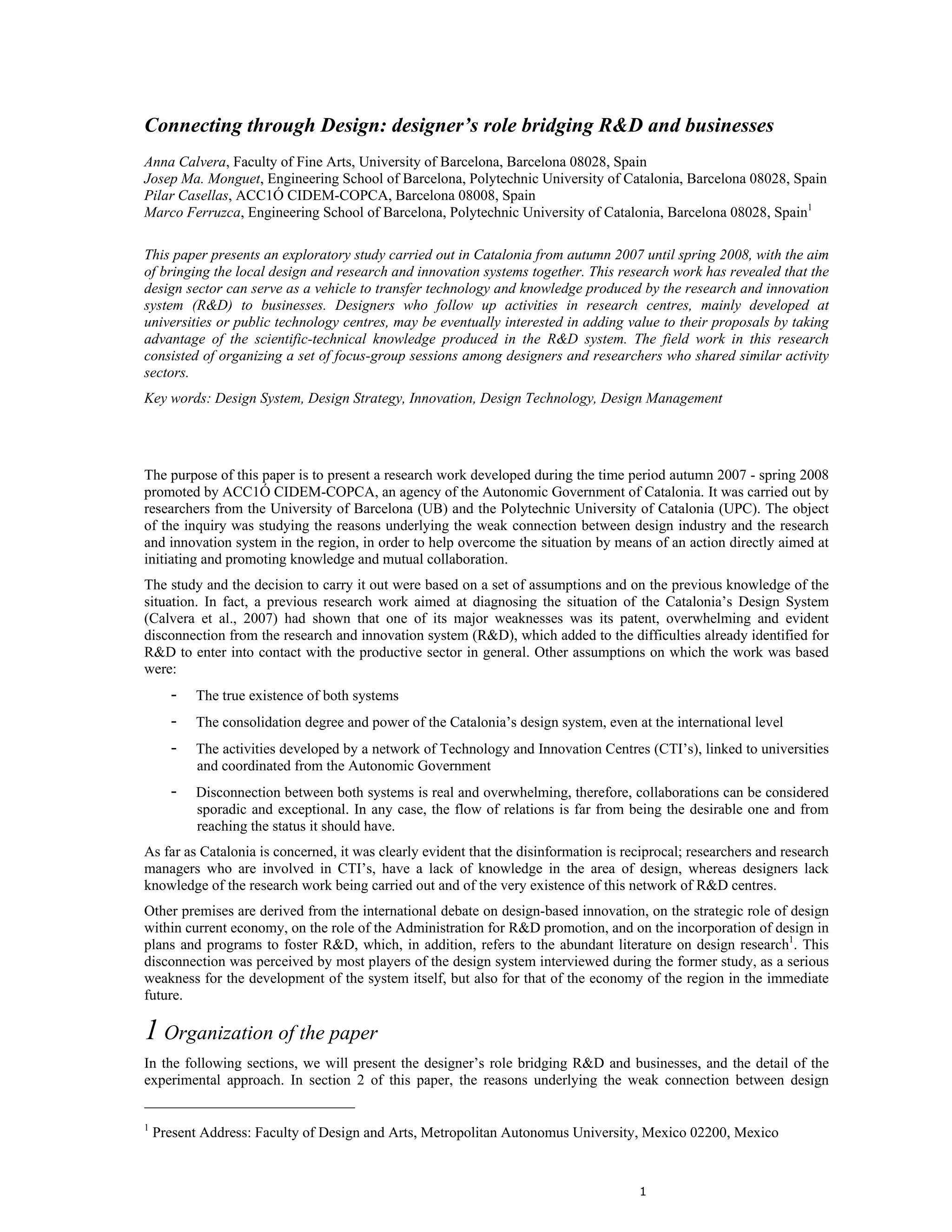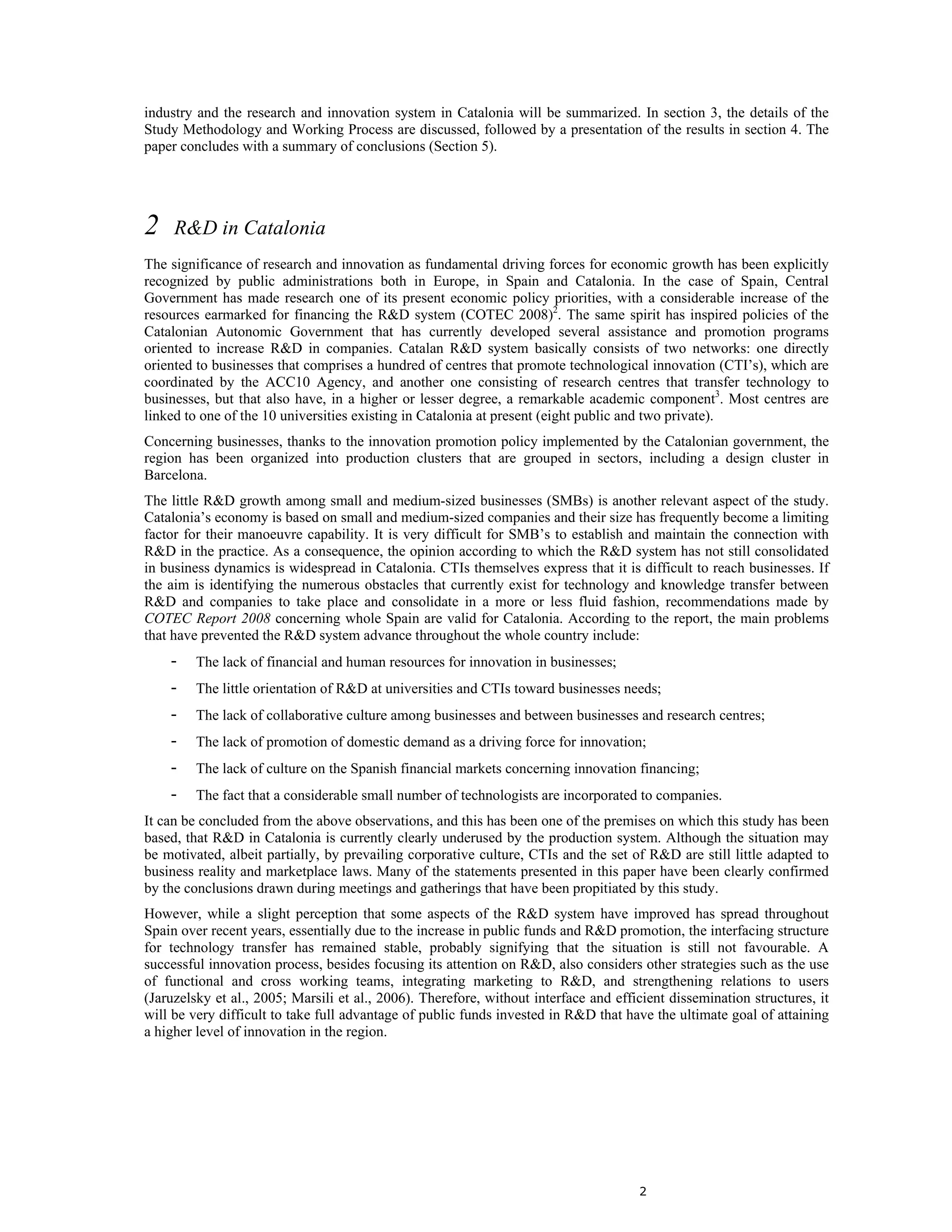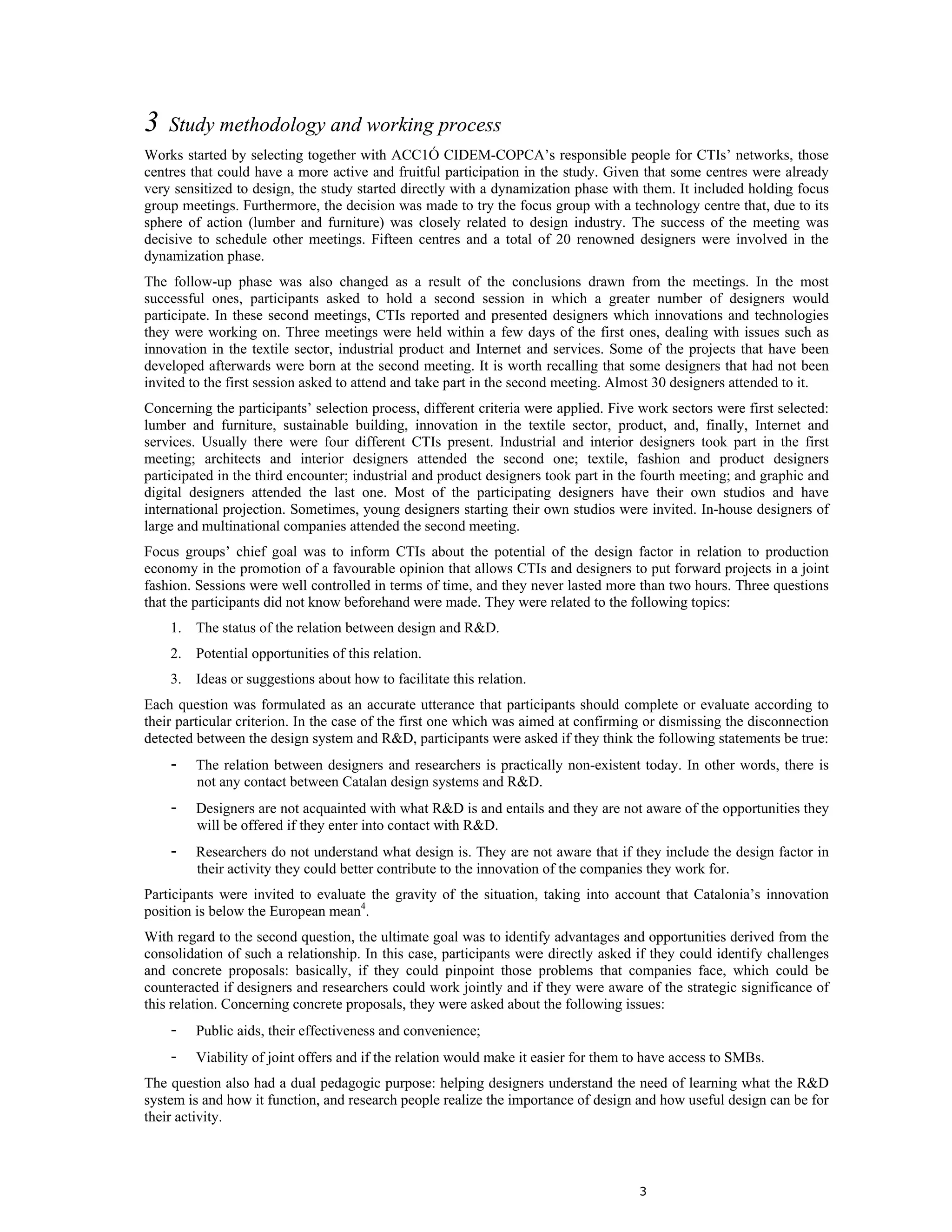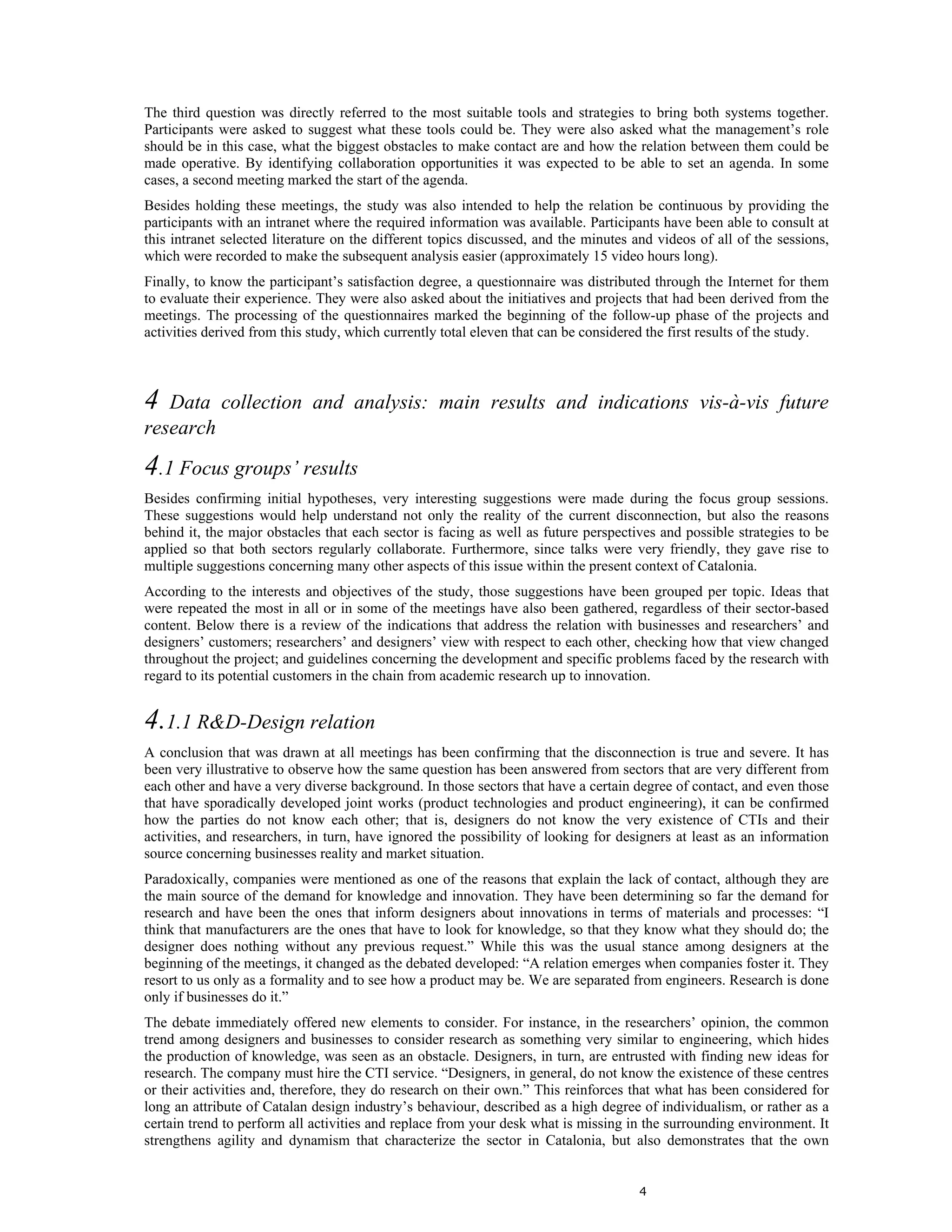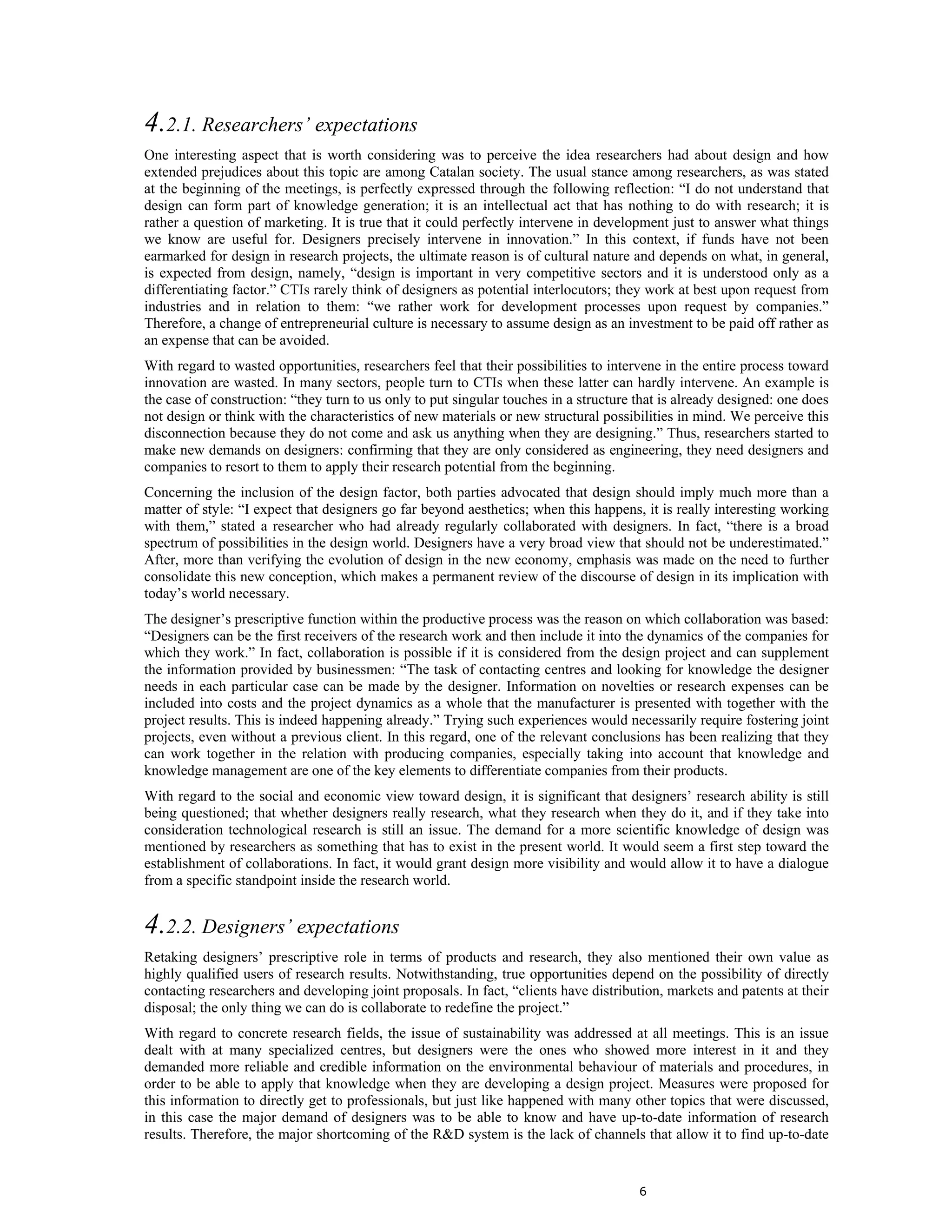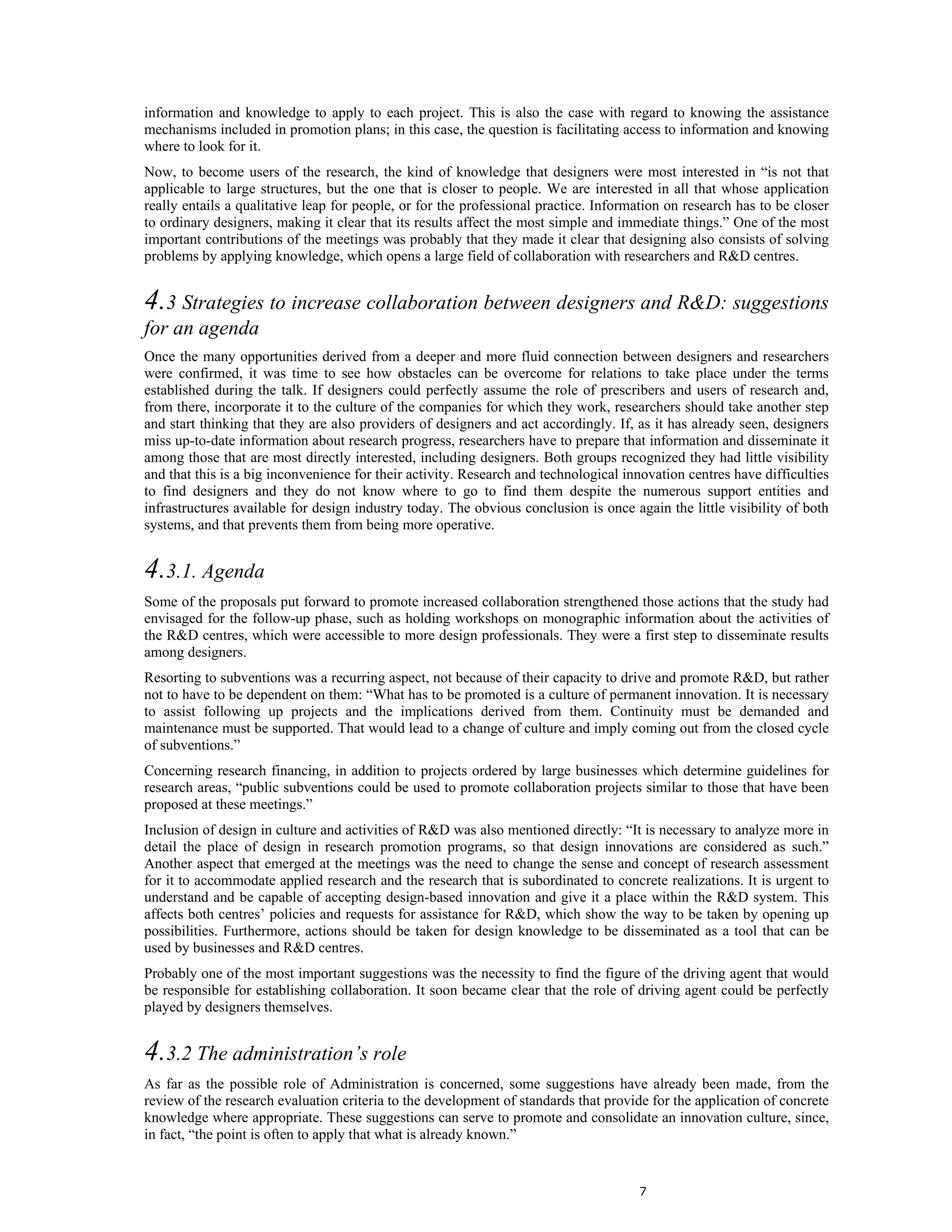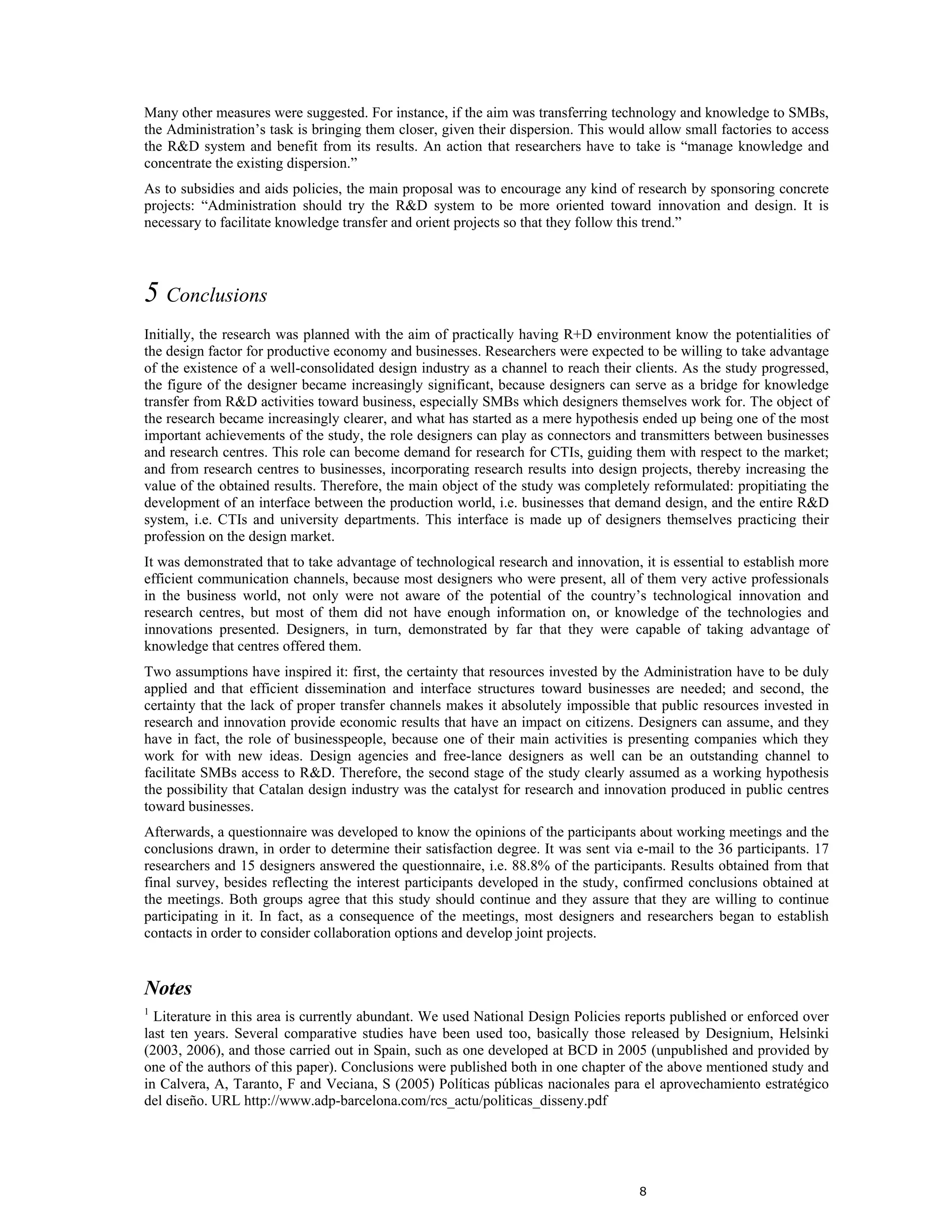The paper discusses a study conducted in Catalonia from 2007 to 2008 aimed at bridging the gap between the local design sector and research and innovation (R&D) systems. It highlights the disconnection between designers and researchers, revealing that designers are often unaware of R&D opportunities, while researchers lack understanding of design's role in innovation. The study emphasizes the need for better collaboration strategies to utilize R&D resources effectively for economic growth in the region.
